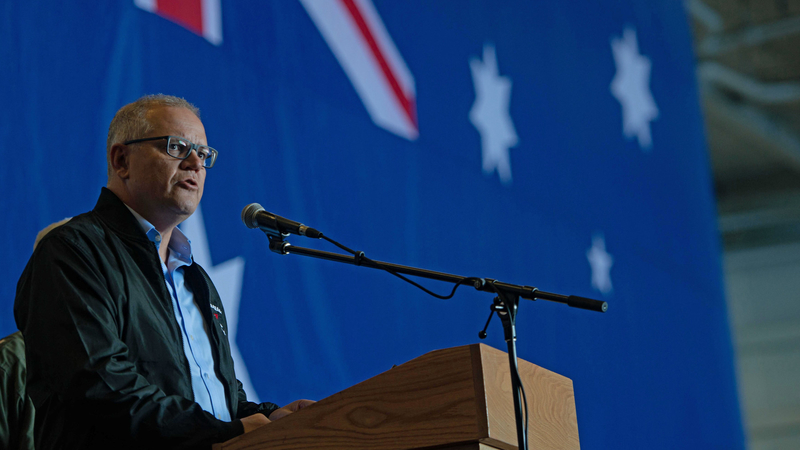Canberra keeps China confused
November 26 2020

Note: This article appeared in the print edition of The Australian Financial Review on November 26 2020. It also appeared online on November 25 2020.
Prime Minister Scott Morrison said in June that on China his government had ‘done nothing to injure that partnership – nothing at all’.
This week, he attributed worsening tensions to ‘some misunderstandings’. To be precise, China’s misunderstandings.
This is a strikingly one-sided reading of developments.
Meanwhile, spare a thought for the 8184 local businesses that sold 461,027 consignments to China last year.
Encouraged by successive Australian governments, they have invested millions of dollars of their own money and spent years building connections to the world’s fastest growing market. That access is now at risk.
Trade delivers one in five Australian jobs. And in the year to October, China’s share of Australia’s goods trade hit a record high of 35.1 percent.
To be clear, propaganda from China that tensions are all Canberra’s fault is way off the mark.
China has changed since President Xi Jinping took the reins in 2012. Earlier this month, prominent business figure Warwick Smith conceded that China’s foreign policy had shifted from being ‘assertive’ to ‘aggressive’. Governments everywhere are responding.
Morrison’s latest musings rightly draw attention to great-power competition between the US and China.
It was an Australian promise to China about how it would approach that building rivalry that allowed bilateral ties to flourish following a rupture in the mid-1990s.
Recalling this episode, [former] Prime Minister John Howard wrote in 2010: ‘I made it clear to the Chinese president that the alliance between Australia and the United States was…not in any way directed against China’.
Fast forward to 2011 and then-US President Barack Obama used an address to Australia’s Parliament to announce a US ‘pivot to Asia’, countering China in its own backyard.
In 2018, the US formally defined China as a strategic competitor.
Not surprisingly, Beijing has grown sensitive to Washington’s efforts to recruit partners.
Morrison insists that his government runs an independent foreign policy. That includes a sovereign right to work with any partner it wishes, including the US.
But recall Howard’s promise that the alliance with the US would never target China.
Contrary to the frequently crude commentary appearing in Chinese state media, Morrison can point to plenty of evidence that Australia is not simply a US lackey. At the same time, he said this week the US alliance was ‘anchored in our shared world view’.
How can this be so when the US view of the world is now dominated by perceptions of China being a ‘whole-of-society threat’?
No wonder the Chinese embassy in Canberra is confused.
Our American friends deserve more frequent public rebukes.
In 2016, the US State Department leaked to local media its polling of the Australian public that alleged widespread alarm over Canberra’s decision to approve the lease of the port of Darwin to a Chinese company.
Later that year, then US ambassador John Berry offered up an interview with Australian political commentator Paul Kelly. The topic on Berry’s mind? ‘We have been surprised, quite frankly, at the extent of the involvement of the Chinese government in Australian politics’.
Such interventions made subsequent – often quite sensible – Australian government moves around foreign investment and interference more difficult to defend as independent action.
Earlier this month, US Secretary of State Mike Pompeo said his ambassadors the world over ‘have China at the top of their list’ of talking points and policy objectives.
US meddling, however, cannot be an excuse for Australian own goals. An example: there’s a cute line pretending that Beijing was enraged simply because, on April 19, Foreign Minister Marise Payne had the fortitude to call for an independent international inquiry into the origins and spread of COVID-19.
But this followed US President Donald Trump calling COVID-19 the ‘Chinese virus’ and blaming the Chinese government for a massive cover-up, rather than taking responsibility for his own incompetence.
Two days before Payne’s call, Home Affairs Minister Peter Dutton, freshly returned from Washington, was asked: ‘The US wants China to come clean over the virus outbreak, do you agree?’ He replied: ‘I do think there will be a reset in the way the world interacts with China. We do want more transparency…’.
On April 21, the Chinese embassy voiced its suspicion that Dutton ‘must have … received some instructions from Washington requiring him to co-operate with the US in its propaganda war against China’.
Then, as if to confirm this, the very next day Morrison tweeted that he had spoken to Trump ‘about the World Health Organization and working together to improve the transparency … Australia and the US are the best of mates and we’ll continue to align our efforts’.
Japan took a different approach.
In February, Tokyo had rapidly mobilised medical supplies, and parliamentarians even donated a portion of their salary to support China’s efforts as the virus wreaked damage in Wuhan and other cities.
Unless Morrison and Xi are able to update the now frayed understanding struck between their predecessors, Howard and Jiang Zemin, there appears no sustainable off-ramp to tensions in sight.
Professor James Laurenceson is Director of the Australia-China Relations Institute at the University of Technology Sydney.

